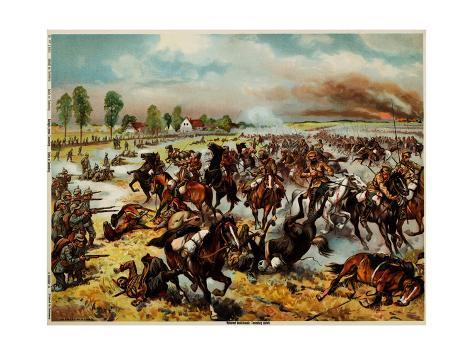
However with some help we covered some of the central ground covered by the Russian 2nd Army and the German 8th Army during the fighting of the 26th to 29th August 1914.

It covers a vast area and most of the monuments, markers and cemeteries have been lost in the years that have intervened. The Battle of Grunwald was also later used in Nazi and Soviet propaganda campaigns, with Nazi Germany portraying their Lebensraum policies as a continuation of the Knights’ historical mission and Soviet historiography styling the battle as an ethnic struggle between Slavs and Germanics and as the medieval counterpart to the Battle of Stalingrad.įind out more about Central European history in our On this Day series.The Tannenberg battlefield is not easy to interpret. The Germans then forced the First Army to retreat out of East Prussia at the Battle of the Masurian Lakes, resulting in a complete strategic collapse of the Russian invasion.Īlthough the battle took place near Allenstein (Olsztyn), Hindenburg, realizing its propaganda potential, named the victory after Tannenberg, 30 km to the west, and framed it as a revenge for the Teutonic Knights’ defeat against Poland-Lithuania 500 years earlier at the Battle of Grunwald, known as the Battle of Tannenberg in German. Perhaps the most spectacular and complete German victory of the First World War, the battle all but ended Russia’s invasion of East Prussia before it had even really started. Alexander Samsonov, lost in the surrounding forests with his aides, shot himself, unable to face reporting the scale of the disaster to the Tsar, Nicholas II. But it was too late, as his forces scattered directly into the encircling German forces.Ībout 95,000 Russians troops were captured an estimated 30,000 were killed or wounded, and of his original 150,000 total, only around 10,000 of Samsonov’s men escaped. On this Day, in 1914: Russian forces began laying siege to the fortress-city of PrzemyślĬritically short of supplies and with his communications system in tatters, Samsonov finally became aware of the peril he faced and ordered a general withdrawal. Upon his arrival in East Prussia, Hindenburg immediately reversed Prittwitz’s decision to withdraw, choosing instead to authorise a plan of attack and to move troops to the far south to meet Samsonov’s Second Army, effectively surrounding the Russian contingent. Meanwhile, Samsonov bedevilled by supply and communication problems, was entirely unaware that Rennenkampf had chosen to pause and lick his wounds, instead assuming that his forces were continuing their movement south-west. The German Chief of Staff recalled Prittwitz to Berlin and installed as his replacement the markedly more aggressive veteran Paul von Hindenburg, who was brought out of retirement at the age of 66. On this Day, in 1914: World War I broke out when Austria-Hungary declared war on SerbiaĬommanded by General Yakov Zhilinsky from Warsaw, the two armies initially planned to combine in assaulting Prittwitz’s Eighth Army stationed in East Prussia – Rennenkampf in a frontal attack with Samsonov engulfing Prittwitz from the rear.īut after a scrappy victory against the Germans at the Battle of Gumbinnen, Rennenkampf paused to reconsolidate his forces, while Prittwitz, shaken and fearful of encirclement, ordered a retreat to the river Vistula. Pledged to their French allies to assume the offensive against Germany at the earliest possible date, Russia’s First Army led by General Paul von Rennenkampf assembled on the eastern frontier of East Prussia, while the Second Army under General Alexander Samsonov gathered at Warsaw. The troops in East Prussia, organized into four corps, formed the Eighth Army, commanded by General Max von Prittwitz.

Some second-line troops were tasked with the defense of the Eastern Front fortresses such as Posen (Poznań), Thorn (Toruń), Danzig (Gdańsk), and Konigsberg (Kaliningrad) and to watch the Polish frontier. The choice of France for the initial offensive was actuated chiefly by the relative slowness of Russian mobilization and by the impossibility of gaining a rapid victory against Russia owing to the great distances. On August 30, 1914, in the early days of World War I, the German forces led by Paul von Hindenburg almost completely annihilated the Russian Second Army at the Battle of Tannenberg, in modern-day Poland, all but ending Russia’s invasion of East Prussia before it had even really started.įollowing the outbreak of World War I in July 1914, the German General Staff drew up a plan which provided for quick, all-out ground offensive against France, designed to obtain a rapid and decisive victory, while taking up defensive positions in the east against Russia, until the victory had been obtained in the west.


 0 kommentar(er)
0 kommentar(er)
